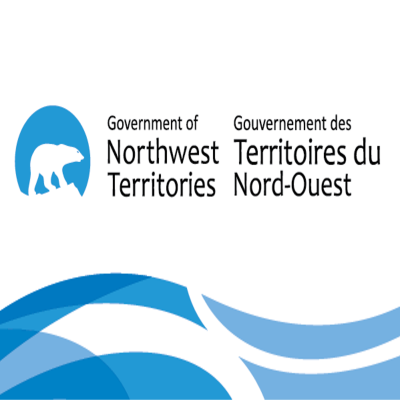other
Type of resources
Available actions
Topics
Keywords
Contact for the resource
Provided by
Formats
Representation types
Update frequencies
status
-

The Canada Basemap – Transportation (CBMT) is a vector tile service that provides spatial reference context with an emphasis on transportation networks across Canada. It is designed especially for use as a background layer in a web mapping application or geographic information system (GIS). Access: Access is free of charge under the terms of the Open Government Licence - Canada. Data Sources: Data for the CBMT is sourced from multiple datasets. - Topographic data of Canada - CanVec Series. - “Automatically Extracted Buildings” GeoBase (a raw digital product in vector format automatically extracted from airborne Lidar data, high-resolution optical imagery or other sources). - Open Street Map (OSM) data available under the Open Database License (https://www.openstreetmap.org/copyright). - Official names from the Canadian Geographical Names Database (CGNDB). Geographic Coverage: CBMT has complete coverage of the world, with full datasets in Canada and only partial data in other parts of the world including boundaries, Country Names, and major cities. Data Update Frequency: Updates are applied monthly to reflect the latest updates in the source datasets. Projection: Data is provided in the EPSG:3857 (WGS84 Pseudo-Mercator) projected coordinate system. Layer Access: - CBMT is accessible via the ArcGIS Online item link with the applied style or it can also be accessed directly with the default style using the following Vector Tile Server: https://tiles.arcgis.com/tiles/HsjBaDykC1mjhXz9/arcgis/rest/services/CBMT_CBCT_3857_V_OSM/VectorTileServer - In QGIS or other applications that require the style JSON, the following link can be used: https://arcgis.com/sharing/rest/content/items/800d755712e8415aab301b9d55bc2800/resources/styles/root.json Use Cases: This layer is suitable for use in any map as a basemap layer and can be modified to meet the needs of the project by editing the JSON style in the Vector Tile Style editor. Additional Versions: - A geometry-only version (CBMT3857GEOM) and a text-only version (CBMT3857TXT) are available. - French versions of the basemap are accessible via the Carte de base du Canada - Transport 3857 V (CBCT3857).
-

The Canada Basemap – Transportation (CBMT) is a vector tile service that provides spatial reference context with an emphasis on transportation networks across Canada. It is designed especially for use as a background layer in a web mapping application or geographic information system (GIS). Access: Access is free of charge under the terms of the Open Government Licence - Canada. Data Sources: Data for the CBMT is sourced from multiple datasets. - Topographic data of Canada - CanVec Series - “Automatically Extracted Buildings” GeoBase (a raw digital product in vector format automatically extracted from airborne Lidar data, high-resolution optical imagery or other sources.) - Open Street Map (OSM) data available under the Open Database License (https://www.openstreetmap.org/copyright). - Official names from the Canadian Geographical Names Database (CGNDB). Geographic Coverage: CBMT covers the entire geographic area of Canada and some major transportation routes and cities in the northern States of the USA. Data Update Frequency: Updates are applied monthly to reflect the latest updates in the source datasets. Projection: Data is provided in the EPSG:3978 (NAD83 Canada Atlas Lambert) projected coordinate system. Layer Access: - CBMT is accessible via the ArcGIS Online item link with the applied style or it can also be accessed directly with the default style using the following Vector Tile Server: https://tiles.arcgis.com/tiles/HsjBaDykC1mjhXz9/arcgis/rest/services/CBMT_CBCT_3978_V_OSM/VectorTileServer - In QGIS or other applications that require the style JSON, the following link can be used: https://arcgis.com/sharing/rest/content/items/708e92c1f00941e3af3dd3c092ae4a0a/resources/styles/root.json Use Cases: This layer is suitable for use in any map as a basemap layer and can be modified to meet the needs of the project by editing the JSON style in the Vector Tile Style editor. Additional Versions: - A geometry-only version (CBMT3978GEOM) and a text-only version (CBMT3978TXT) are available. - French versions of the basemap are accessible via the Carte de base du Canada - Transport 3978 V (CBCT3978).
-

Mackenzie Valley Air Photo Digital Orthotiles
-

Canada Center for Mapping and Earth Observation (CCMEO)'s basemap is essential in supporting the Government of Canada’s priorities in areas such as open government, climate change mitigation, Indigenous reconciliation, emergency management, disaster preparedness and response, sustainable natural resource management, infrastructure planning, economy/labour and more. It reinforces CCMEO’s commitment to improving the accessibility, interoperability and integration of geospatial data across Canada. CCMEO currently offers multiple basemap types which include the following found in this series: - Transportation basemap (CBMT) in raster tile format - Transportation basemap (CBMT) in vector tile format EPSG: 3857 (WGS84 Pseudo-Mercator) - Transportation basemap (CBMT) in vector tile format EPSG: 3978 (NAD83 Canada Atlas Lambert) - Digital Elevation Model (DEM) - hillshade basemap (CBME) - Simple grey basemap - Provinces/Territories basemap - Grids (Lat/Long, NTS and UTM) basemap
-

Mackenzie Valley Air Photo Contours Data
-

New geochemical data from re-analysis of archived stream sediment samples have been assessed using weighted sums modeling and catchment basin analysis as described in the methodology report that accompanies this map (YGS Open File 2015-10). Both commodity and pathfinder element abundances are evaluated to highlight areas that show geochemical responses consistent with a variety of base and precious-metal mineral deposit types. The results of modeling, completed using two approaches, are presented as a series of catchment maps and associated data files. This release is part of a regional assessment of stream sediment geochemistry that covers a large part of Yukon.
-

New geochemical data from re-analysis of archived stream sediment samples have been assessed using weighted sums modeling and catchment basin analysis as described in the methodology report that accompanies this map (YGS Open File 2015-10). Both commodity and pathfinder element abundances are evaluated to highlight areas that show geochemical responses consistent with a variety of base and precious-metal mineral deposit types. The results of modeling, completed using two approaches, are presented as a series of catchment maps and associated data files. This release is part of a regional assessment of stream sediment geochemistry that covers a large part of Yukon.
-

Exo makes its data on schedules and planned routes available in the standardized *General Transit Feed Specification* (GTFS) format.**This third party metadata element was translated using an automated translation tool (Amazon Translate).**
-

Exo makes its data on schedules and planned routes available in the standardized *General Transit Feed Specification* (GTFS) format.**This third party metadata element was translated using an automated translation tool (Amazon Translate).**
-

Exo makes its data on schedules and planned routes available in the standardized *General Transit Feed Specification* (GTFS) format.**This third party metadata element was translated using an automated translation tool (Amazon Translate).**
 Arctic SDI catalogue
Arctic SDI catalogue